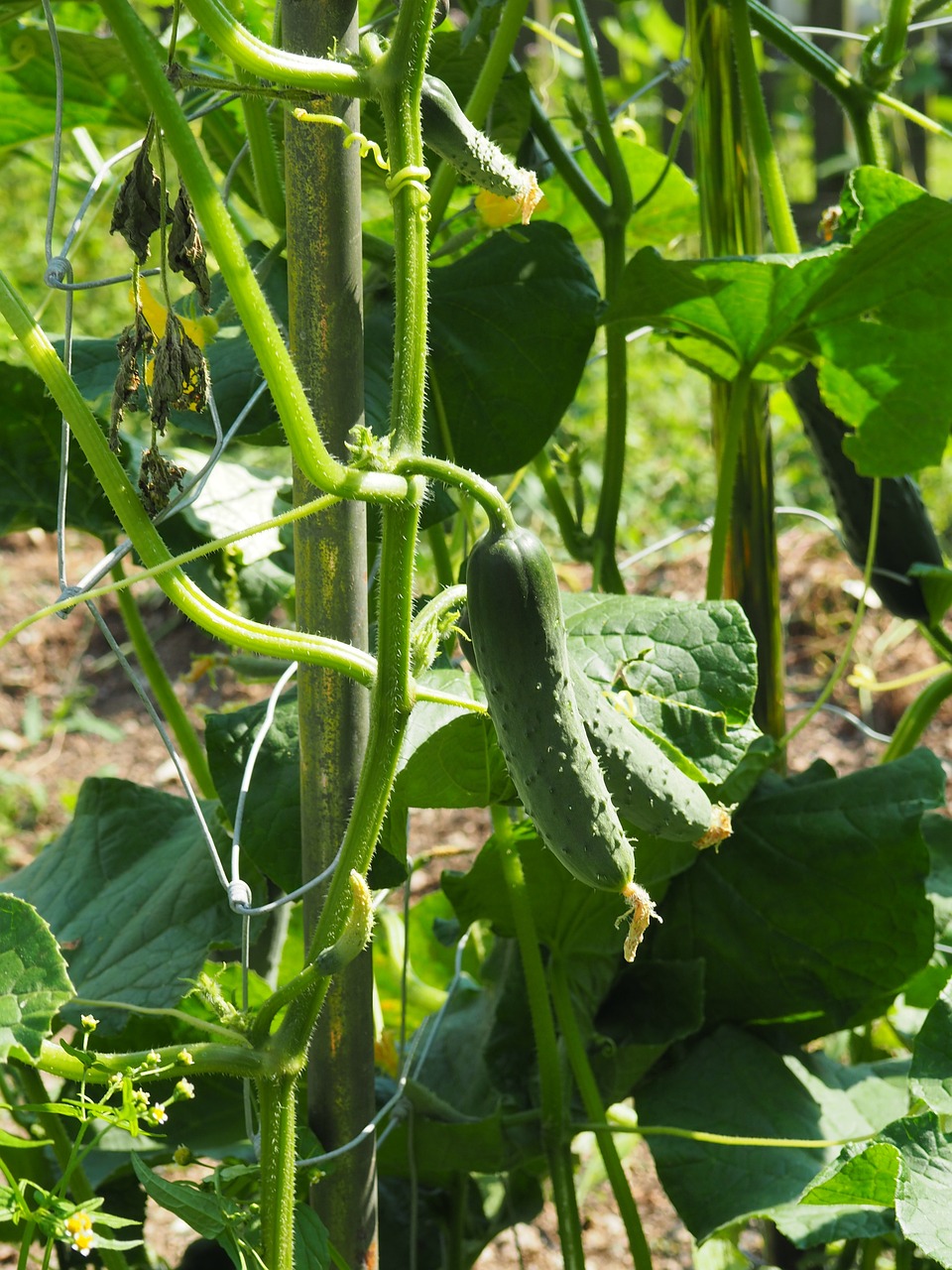
Imagine a thriving cucumber jungle, a verdant oasis where emerald vines twist and turn, heavy with crisp, refreshing fruits. Sounds delightful, doesn’t it? But achieving this cucumber utopia requires more than just sunshine and water. Here’s where companion planting comes in – a strategic dance where different plants support and enhance each other’s growth.
This article unveils the best companion plants for cucumbers, transforming your plot from a solo act into a thriving, collaborative ecosystem. Buckle up, fellow gardeners, and get ready to witness the magic of botanical synergy!
Unveiling the Power of Plant Partnerships
Why companion planting? It’s not just about aesthetics (although a diverse garden is undeniably beautiful). Here’s how strategically placed plant pals can supercharge your cucumber success:
- Pest Patrol: Certain plants, like pungent marigolds and nasturtiums, repel harmful insects with their strong aromas, acting as natural bodyguards for your cucumbers.
- Pollinator Power: Fragrant herbs and flowering companions like borage and dill attract a swarm of helpful pollinators, such as bees and butterflies. These busy creatures ensure the proper transfer of pollen, leading to a bountiful harvest.
- Nutrient Neighborhood: Leguminous plants (those in the pea and bean family) have a superpower – they fix nitrogen in the soil. This vital nutrient becomes readily available for your cucumbers, boosting overall plant health and fruit production.
- Living Mulch: Low-growing plants like creeping thyme can act as a living mulch, suppressing weeds and helping retain valuable moisture in the soil – perfect for thirsty cucumbers.
The Cucumber’s Dream Team: A Guide to Ideal Companions
Now that you’ve grasped the magic of companion planting, let’s delve into the specific plant heroes who will elevate your cucumber experience.
Pollinator Powerhouses:
- Dill: This feathery friend not only attracts pollinators with its delicate yellow flowers but also enhances the flavor of your cucumbers – a win-win situation!
- Borage: Don’t be fooled by its unassuming blue blooms – borage is a pollinator magnet. Plus, its edible flowers add a touch of elegance to salads.
- Nasturtiums: These vibrant flowering companions not only attract pollinators but also act as a trap crop, attracting and diverting pests away from your precious cucumbers.
Pest-Repelling Powerhouses:
- Marigolds: Renowned for their potent fragrance, marigolds repel a variety of nasty insects, including aphids, thrips, and whiteflies, keeping your cucumber patch safe.
- Mint: Beyond its culinary uses, mint’s strong scent deters unwanted visitors like squash bugs and beetles. Plant it strategically around the perimeter of your cucumber patch for maximum protection.
- Catnip: This feline favorite not only keeps your cat entertained but also repels aphids and other cucumber-loving pests – a win for both you and your furry friend!
Nutrient-Boosting Buddies:
- Beans: These nitrogen-fixing legumes add a valuable source of this essential nutrient to the soil, benefiting your cucumbers and contributing to their healthy growth. Choose from bush beans or climbing varieties, depending on your space constraints.
- Peas: Similar to beans, peas are nitrogen-fixing champions, enriching the soil and promoting vigorous cucumber growth. Plus, you get a delicious double harvest!
Living Mulch Legends:
- Creeping thyme: This low-growing herb forms a fragrant blanket around your cucumber plants, suppressing weeds and retaining moisture in the soil – a haven for thirsty cucumbers.
- Clover: Not just a lucky charm, clover acts as a living mulch, suppressing weeds and adding a touch of green to your garden. Some clover varieties even fix nitrogen, providing an extra perk for your cucumbers.
Planting Pointers for a Thriving Patch:
Now that you’ve assembled your cucumber dream team, here are some key planting tips for optimal results:
- Research Sun and Spacing Needs: Different companion plants have varying sunlight and spacing requirements. Ensure proper research to avoid competition for resources.
- Succession Planting: Consider planting fast-growing companions, like radishes, in between cucumber rows. Once harvested, these plants will leave space for your cucumbers to sprawl.
- Interplanting: Don’t be afraid to get creative! Interplant smaller companion plants, like herbs, amongst your cucumber vines for a space-saving, diverse garden.
- Observe and Adapt: Keep an eye on your garden and adjust your planting strategy as needed. Some companion plants might not thrive in your specific environment or compete unexpectedly with your cucumbers.
